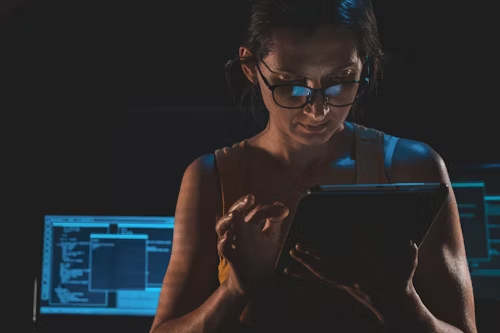For the past seven years, Apple has utilized facial recognition technology for security, and many of us unlock devices with our fingerprints. But have you tried paying with your palm at Whole Foods, or had your face scanned by the Transportation Security Administration (TSA) at the airport? While using biometric data like fingerprints and facial recognition can streamline processes, it also brings significant security risks. Here’s what you need to know to make an informed decision.
Flying Soon? Here’s What to Expect
If you’re traveling, you may have encountered the TSA’s traditional tech, which captures a photo of you to match against your ID for identity verification. Fortunately, they claim to delete those images once you pass through security.
The TSA’s new Touchless Identity Solution changes the game. You simply look at a camera and await approval from an agent—quick and convenient! However, there are some requirements: you’ll need a U.S. passport, TSA PreCheck, and membership in a participating airline’s loyalty program. During check-in via your airline’s app, you’ll be prompted to opt into a biometric scan.
By opting in, you permit the TSA to store your photo in a cloud-based verification service. When you approach the camera, it compares your live image to the stored one. The TSA assures that both images are deleted within 24 hours after your flight.
Beyond Airports: Where Else Are You Being Recorded?
Paying with Your Palm
Whole Foods employs a similar biometric process with its palm-scanning technology. By using the Amazon One app, you can link a credit card to your “palm signature.” When you scan your hand in-store, it checks against palm signatures stored in Amazon’s cloud, allowing you to complete your purchase seamlessly.
Are These Biometric Systems Secure?
While it’s improbable for someone to deceive biometric systems at the airport, security agents are trained to spot inconsistencies. Similarly, at Whole Foods, the systems incorporate “liveness detection,” analyzing motion, depth, and texture to enhance security.
However, as technology evolves, so do the tactics of cybercriminals. The rise of sophisticated AI deepfakes poses a potential threat; a highly advanced deepfake could eventually fool facial recognition systems, especially if there isn’t a human present to verify identity.
The Key Concern
Trusting government agencies and large companies to safeguard your biometric data doesn’t guarantee immunity from data breaches. Any data you provide can become a target for hackers.
If you’re considering using these services, here are some tips to protect your biometric information:
- Research the Reputation: Before sharing your biometric data, evaluate the company or agency’s track record. The TSA is generally more reputable than lesser-known apps. A quick search for “data breach” related to the organization can be insightful.
- Combine Biometric Data with Strong Security: Whenever possible, use biometric identification alongside strong passwords, two-factor authentication, or authenticator apps.
- Secure Your Connection: If you must upload biometric data online, use a virtual private network (VPN) to encrypt your internet connection, particularly on public networks. This adds an extra layer of security against potential threats.
By staying informed and cautious, you can navigate the evolving landscape of biometric data sharing while safeguarding your personal information.


